
The Pinnacle of Craftsmanship: The Art of the Japanese Knife by Genkai and Hakuho
-
Genkai Masakuni, the master of forging, and Hakuho, the legendary sharpening artisan, create Japanese knives that transcend functionality and reach the level of "living art." Discover the unparalleled craftsmanship and dedication behind their creations.
-
The Essence of Forging: Genkai Masakuni
-

From a Quiet Workshop Comes Unrivaled Japanese Knives
Genkai Masakuni (Muko Yoneo) is a forging artisan who produces only a few knives per day, ensuring every piece is crafted with unparalleled precision. These knives are not merely tools but the culmination of centuries-old Japanese craftsmanship, standing as masterpieces of art.
-
He is the sole disciple of the legendary forger, Koshiji Masakuni (Heianjo Koshiji), and the last bearer of the rare "Mizuyaki Forging" technique. This method endows steel with exceptional hardness but is notoriously difficult to master, making Genkai’s work truly one-of-a-kind.
-
The Three Pillars of Genkai’s Knives
1. Unrivaled Craftsmanship
- Over 20 meticulous processes, performed entirely by hand
- Exceptional steel hardness achieved through Mizuyaki forging
- The rarity of producing only a few knives daily
-
2. Unmatched Sharpness
- Precision and smoothness that amaze even top chefs
- Elevates the quality of dishes with its outstanding performance
-
3. Absolute Dedication
- Every knife infused with the artisan’s soul
- A coveted masterpiece admired by chefs worldwide
The Legend of Sharpening: Hakuho Sakaiminamoto
-

The First Certified Traditional Craftsman and Master of Japanese Sharpening
Hakuho was a legendary artisan who elevated knife sharpening to the highest level of artistry. As the first officially certified Traditional Craftsman, his exceptional skills transformed knives into works of art rather than mere tools.
-
Through his expertise, steel came alive, imbued with precision and vitality, creating knives that symbolized the pinnacle of Japanese craftsmanship. His legacy continues to inspire, representing the essence of Japan’s knife culture.
-
What Makes Hakuho’s Work Unique
1. Exclusive Mirror-Polished Finish
Hakuho’s double mirror-polished finish was created exclusively for the Shiroyama Knife Workshop. These masterpieces are highly prized by collectors for their unmatched beauty and technical excellence. -
2. Works That Will Never Return to the Market
In March 2019, Hakuho quietly completed his life’s work, and no new knives will ever be produced. The knives he sharpened are now all that remain, making them extraordinarily rare heirlooms to be treasured for generations. -
3. The Soul of Sharpening
Hakuho’s techniques remain unparalleled, breathing new life into each blade. His legacy endures as a hallmark of Japanese craftsmanship, symbolizing a skill level no other artisan has matched.
The Story of Two Masters
-
Genkai, the forger, and Hakuho, the sharpener.
Together, they embody the pinnacle of Japanese knife culture, creating works that are more than tools—they are masterpieces of art and cultural heritage. Each blade carries the soul of its maker and the legacy of a centuries-old tradition. -
Discover the extraordinary story of these two artisans and the world-class knives from Sakai City, Japan.
The Master Behind the Handles and Sheaths: Introducing the Renowned Artisan of Shiroyama Knives
-

-
Toshiyuki Terauchi
-
Mr. Terauchi is a distinguished artisan who shines in the world of traditional craftsmanship. He honed his skills under the guidance of Mr. Mizuno, a legendary jeweler and craftsman whose collaborative work with Hakuhō and Genkai won the gold prize at a traditional crafts competition over 30 years ago. Terauchi mastered the intricate techniques of crafting knife handles and sheaths, elevating them to a level that blends functionality with artistic beauty.
-
Today, Mr. Terauchi exclusively works with Shiroyama Knife Workshop, dedicating himself to preserving the heritage of Sakai knives while embracing innovation. His meticulous craftsmanship reflects an unwavering commitment to detail and a deep respect for the traditions he carries forward.
-
The works he creates are not merely tools but representations of a new era of Japanese artistry, blending timeless tradition with modern sensibilities.
KIREAJI
White Steel #2 (Honyaki-Mizuyaki) Yanagiba(Kiritsuke) 330mm-Mirror Polished(both sides)
White Steel #2 (Honyaki-Mizuyaki) Yanagiba(Kiritsuke) 330mm-Mirror Polished(both sides)
Out of stock
This Japanese knife is a rare, one-time offer. Once sold out, it will not be available again.
Shipping is free to the United States and Canada.
Couldn't load pickup availability
<Type>
Yanagiba(Kiritsuke)
-Single-edged: right-handed
<Material>
- Blade : White Steel #2
- Handle:Solid Silver with Burl Karin Wood Handle
(The silver-wrapped section features mother-of-pearl inlay.)
<Size & Weight>
-Handle to tip length: 344㎜
-Blade height: 35㎜
-Thickness: 4.1㎜
-Weight: 349g
<Other>
-Saya(Sheath): Burl Karin Sheath
Custom-made to fit perfectly without pins.
Crafted by Mr. Terauchi.
-Featuring Mount Fuji and a Full Moon on Both Sides.
<Brand name>
Shiroyama (made in Sakai, Osaka)
Shipping & Returns
Shipping & Returns
Shipping is free to the United States and Canada.
After receiving an order from the customer, the craftsmen in Sakai City attach a handle to the Japanese knife and, if requested, perform Honbazuke as well. Therefore, it takes approximately 2 to 4 weeks to deliver the product.
Please refer to our return policy.










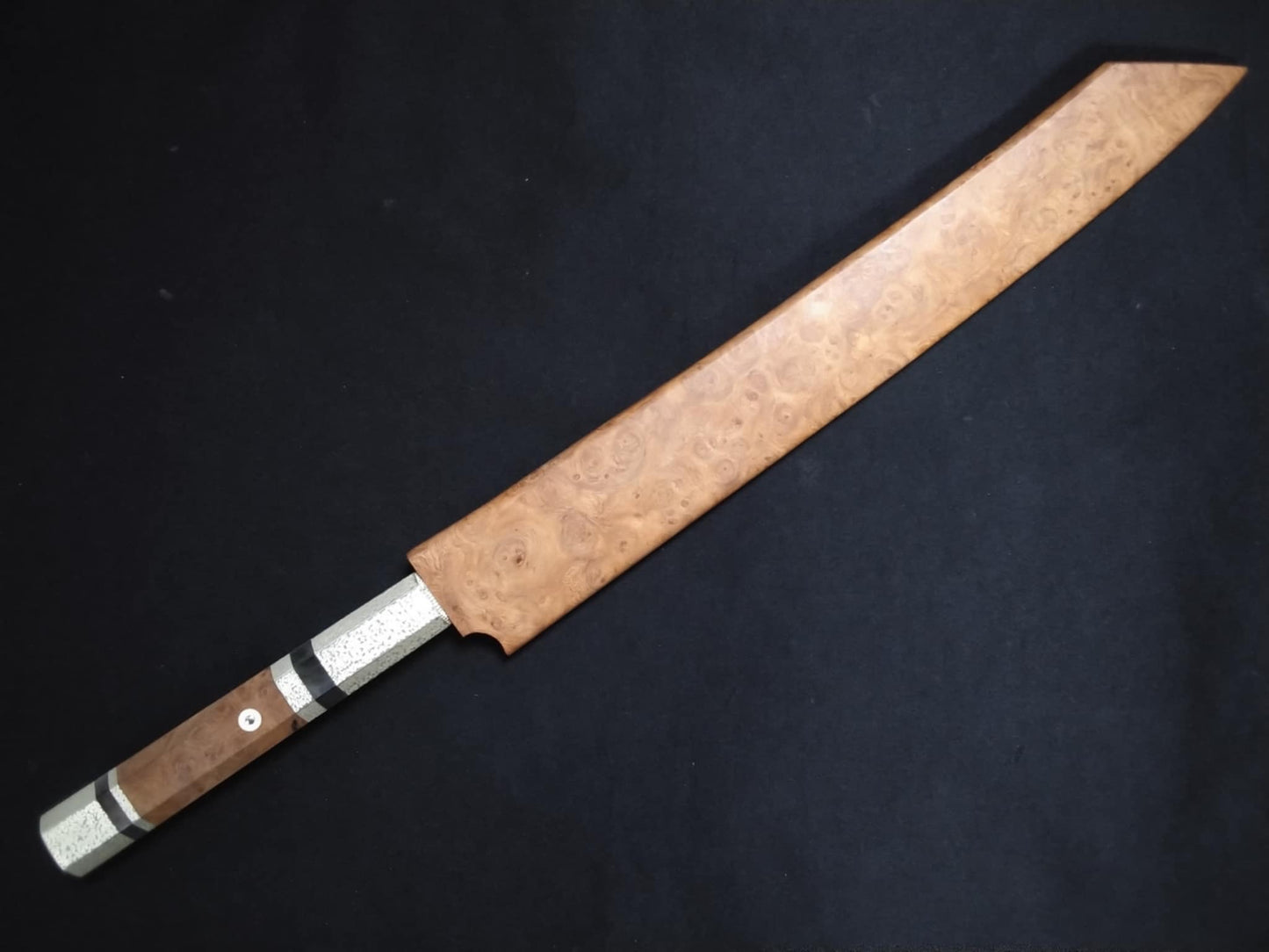
Traditional craftsmen working on this product
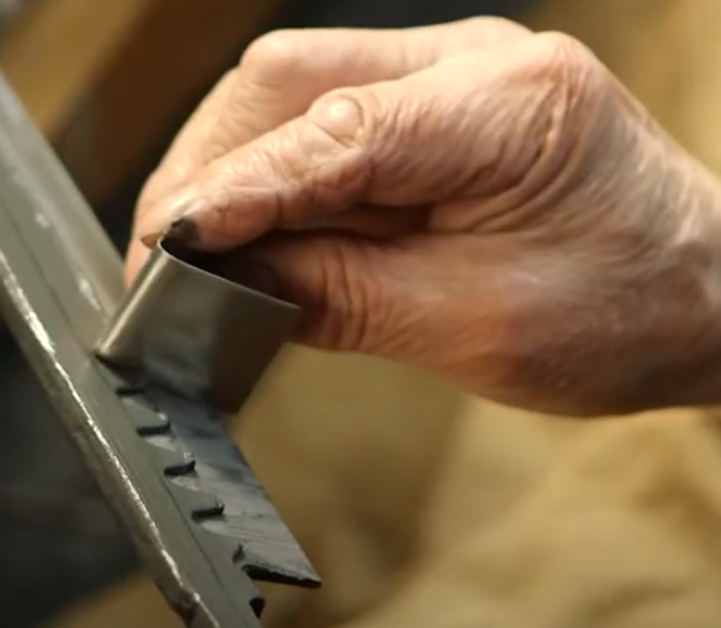
Genkai Masakuni (Yoneo Mukou)
The sole apprentice of Masakuni Okishiba, the first to master Mizuyaki – carrying on the tradition with legendary knives
The Sole Apprentice of Masakuni Okishiba
- Genkai Masakuni is the only apprentice of the renowned Japanese knife maker, Masakuni Okishiba (widely known as "Heianjo Okishiba").
- Masakuni Okishiba was the first to successfully master the Mizumoto-yaki technique, establishing it as the pinnacle of Japanese knife craftsmanship. His legendary skill continues to be highly valued today.
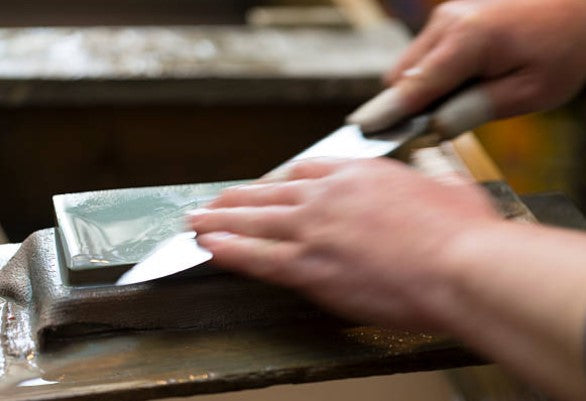
Hakuho Sakaiminamoto(Minoru Hakui)
The Legend of Sharpening
Hakuho stands as a monumental figure in the world of Japanese craftsmanship. Recognized as the first officially certified Traditional Craftsman, he revolutionized knife sharpening, elevating it to an unparalleled art form. His methods transformed simple blades into living masterpieces, each embodying the soul of Japanese heritage.

Toshiyuki Terauchi
Master of Tradition, Creator of New Beauty
Mr. Terauchi is a distinguished artisan who shines in the world of traditional craftsmanship. He honed his skills under the guidance of Mr. Mizuno, a legendary jeweler and craftsman whose collaborative work with Hakuhō and Genkai won the gold prize at a traditional crafts competition over 30 years ago. Terauchi mastered the intricate techniques of crafting knife handles and sheaths, elevating them to a level that blends functionality with artistic beauty.
KIREAJI's Three Promises to You
-

1. Forged in the Legacy of Sakai
From Sakai City—Japan’s renowned birthplace of professional kitchen knives—each blade is crafted by master artisans with over six centuries of tradition. Perfectly balanced, enduringly sharp, and exquisitely finished, every cut carries the soul of true craftsmanship.
-

2. Thoughtful Care for Everyday Use
Every knife includes a hand-fitted magnolia saya for safe storage. Upon request, we offer a complimentary Honbazuke final hand sharpening—giving you a precise, ready-to-use edge from day one.
-

3. A Partnership for a Lifetime
A KIREAJI knife is more than a tool—it is a lifelong companion. With our bespoke paid aftercare services, we preserve its edge and beauty, ensuring it remains as precise and dependable as the day it first met your hand.
-
Precautions
-
1. Honbazuke (Initial Sharpening)
If you wish to request Honbazuke, please select “Yes” when ordering. (Free of charge)
At KIREAJI, we provide the Honbazuke service free of charge upon request.
Please note that this is a practical initial sharpening.
As the knives are shipped internationally, the blade must be protected during transit.
You can make the final adjustments yourself to suit your personal preferences.
2. Handcrafted Nature
Each piece is handcrafted by skilled artisans and therefore unique.
Minor scratches or marks may be visible due to the handmade production process; however, these do not affect performance or functionality.
We kindly ask for your understanding in advance.
3. Natural Materials
As buffalo horn is a natural material, color variations may occur, and the actual product may differ slightly from the photo.
4. Measurements
Please consider the listed weight and length as approximate values.
5. Inventory
We carefully manage our stock, but in the rare case an item is out of stock, we will notify you by email.
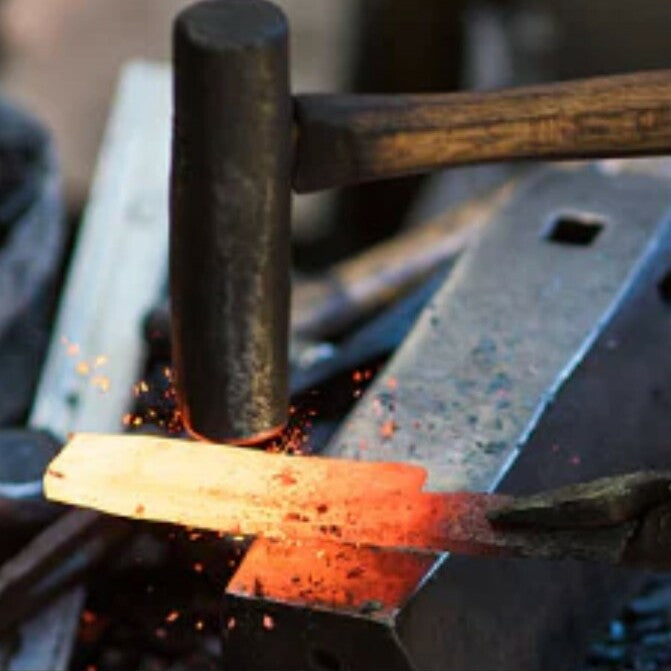
Honyaki
Honyaki knives are manufactured using a different method from general knives. Unlike kasumi knives, honyaki knives lack a soft iron core, making them more susceptible to shocks and very prone to cracking during the hardening process, as there is no escape for the damage. To mitigate this and make the blade less likely to break, a process called "tsuchioki" is performed. Tsuchioki involves applying a mud-like clay to areas that should not be hardened before the hardening process. This ensures that the steel on the spine remains tough and flexible, preventing the blade from cracking. The shape of the tsuchioki application creates wave patterns or Mount Fuji patterns on the blade. Due to the complexity of the hardening process, only a few craftsmen in Sakai (or nationwide) can produce honyaki (mizuyaki) knives.
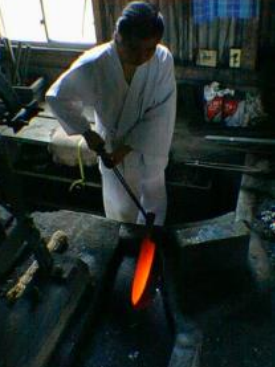
Mizuyaki
There are two types of hardening methods for honyaki knives: Mizuyaki (water quenching) and Aburayaki (oil quenching). Mizuyaki prioritizes sharpness and allows for higher hardness of the steel, maximizing performance, making it the best method for honyaki knives. Additionally, mizuyaki is significantly more difficult to execute compared to aburayaki.
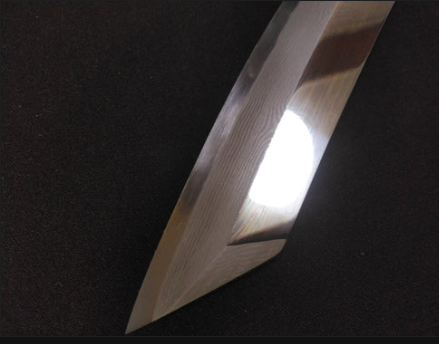
Before Using a Knife
We hope that everyone will use their knives for a long time. To achieve this, I'd like to review what we should pay attention to and what we shouldn't do in order to continue using them effectively.

Daily Care of Japanese Knives
We aim for all of you to use your knives for a long time. To achieve this, we have summarized what aspects of knife care you should pay attention to on a regular basis.
If you have any questions, please feel free to contact us. (Estimated reply time: within 10 hours)
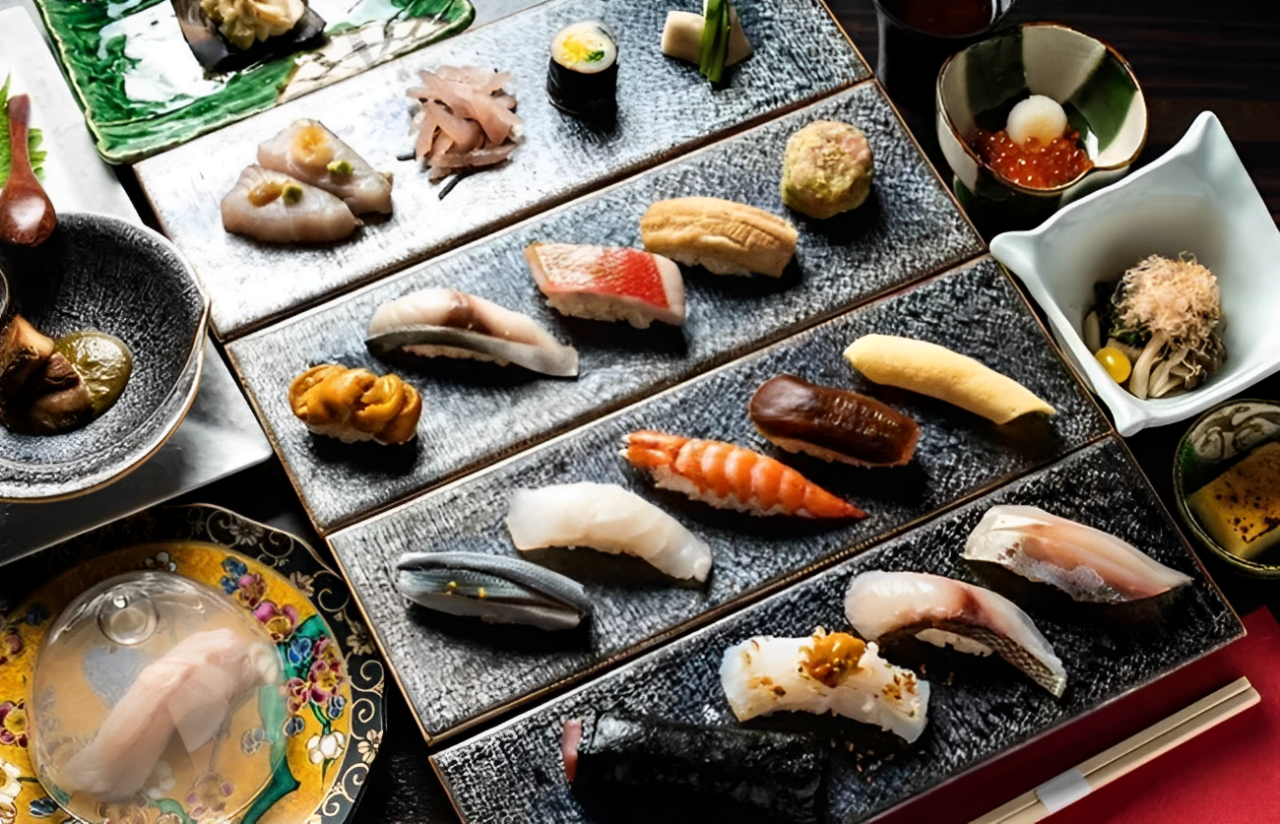
A Chef's Perspective
-
The Soul Etched into Steel: The Mastery of a Single-Bevel Knife
Just by gazing at these ripples, I can feel the breath of the craftsman who created them. Each hammer strike, infused with tension and passion, has etched a pattern into the blade that transcends its function as a mere tool. A knife is not only judged by its sharpness. Its shape, its presence—when held in hand—moves a chef's heart and transforms the act of preparing food into something truly special.
-
Every time I hold this knife, I am inspired. It ignites a desire to become better, to refine my skills even further. The beauty of these ripples is a testament to the artistry and pride of the blacksmiths who forged it. As chefs, we strive to honor their efforts by honing our craft to match the brilliance of theirs.
-
The Essence of Being a Chef, as Taught by the Knife
Every time I face this knife, it feels as though it sharpens not just the ingredients but my skills and my spirit as a chef. The blade becomes a reflection of my dedication, exposing both my strengths and the areas where I need to improve. It’s a mirror of my growth.
-
A great knife doesn’t just cut—it teaches. The way it glides through food, the feedback it gives with every stroke, pushes me to refine my technique and connect more deeply with the art of cooking.
-
For us chefs, a knife is more than a tool. It’s a partner, a silent mentor reminding us to strive for precision, respect the ingredients, and pursue mastery with every dish we create.
-
The Knife That Challenges You to Be Better
Purchasing this knife took a lot of courage, but using it has required even more. It’s not just another kitchen tool; it’s something truly special. The weight of it in your hand, the sharpness, the precision—every slice feels like it’s carrying a legacy.
-
I had to earn the right to use it. It’s not just about skill; it’s about respect. This knife demands your full attention and your dedication. It challenges you to take your craft seriously, to push beyond your limits, and to approach each task with both confidence and humility.
-
Using a knife like this isn't easy, but that's what makes it so rewarding. It’s a reminder that great things are never achieved without overcoming fear—whether it’s the fear of using a beautiful, delicate blade or the fear of not living up to the potential it gives you.
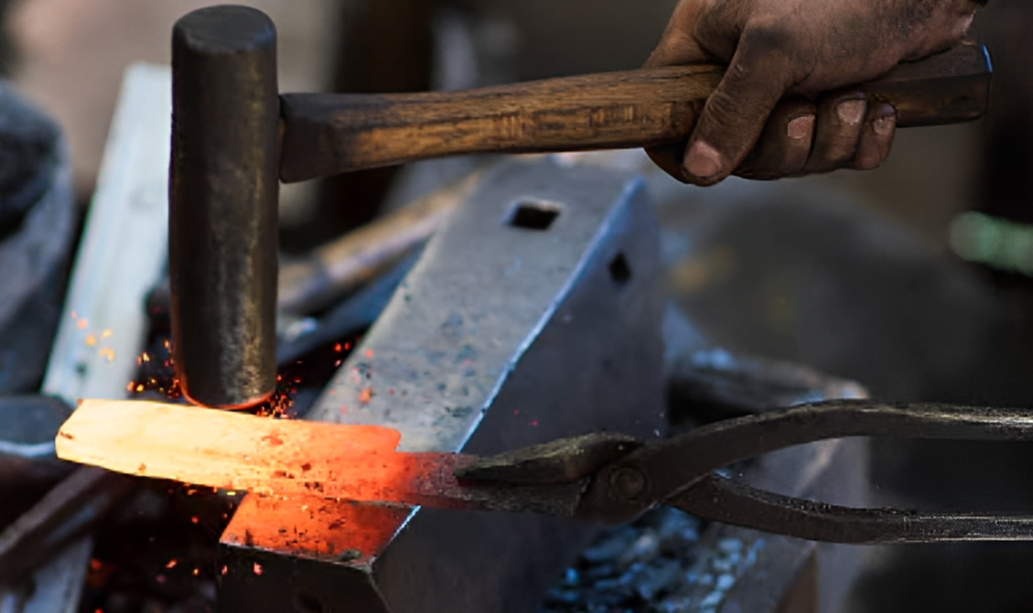
The Origin of Craftsmanship
-
The Craft of Hardening: Creating Unmatched Sharpness
Hardening is one of the most critical and challenging steps in blade-making. By carefully heating the steel and then rapidly cooling it, the blade becomes incredibly hard and sharp, showcasing its exceptional cutting ability.
-
However, this process requires great precision—just a slight miscalculation can cause the blade to crack or lose its performance. Because of this, only a handful of artisans worldwide have mastered this technique.
-
Through hardening, a blade transforms from a mere tool into an extension of the chef's hand, becoming a "tool with a soul." Perfecting this skill is the pride of every true craftsman.
-
The Art of Shaping Steel: The Delicate Balance of Heat and Precision
Shaping steel is an art that demands patience and precision. The process begins with heating the steel, carefully working it into form. However, the true challenge lies in the final stage—the hardening. If the steel is not heated slowly and with perfect care, it can easily be ruined. The margin for error is razor-thin, and even the slightest misstep can undo all the hard work put into the blade. This is where experience, skill, and unwavering focus come into play.
-
In this moment, every craftsman understands: complacency has no place in this craft. It’s the delicate dance between heat and patience that transforms a simple piece of steel into something truly extraordinary.
-
The Fine Line Between Perfection and Ruin: The Art of Controlling Heat
In this craft, the smallest change in fire temperature can make all the difference. A slight miscalculation can cause a blade to crack or break, undoing hours of meticulous work. Every craftsman knows this all too well—the fire holds the power to either perfect the steel or destroy it in an instant.
-
It’s in these moments of tension that our skill and focus are tested. You cannot rush it, and you cannot afford to be careless. The difference between success and failure is measured in the finest degrees of heat, and it’s this precision that defines true craftsmanship.
-
The Pride and Soul Forged into Every Blade
A knife is much more than a simple tool; it carries a meaning beyond its practical use. Every ripple in the blade’s pattern, every mark of the engraving, holds the soul of the craftsman. These are born from the forging process, each unique and irreplaceable, representing our pride as artisans.
-
Through hundreds of strikes with the hammer, we breathe life into the blade. When the knife is finally complete and held in hand, the sense of accomplishment we craftsmen feel mirrors the emotion of those who use it.
-
A knife is not just a kitchen tool—it becomes a true partner in life when you connect with the stories and dedication behind it. We hope this passion reaches your hands and inspires your cooking journey.
-
The Unique Brilliance Born from Tireless Effort
In crafting knives, the most important principle we artisans uphold is the commitment to ‘never cutting corners.’ Every step—hammering the steel, tempering, and polishing—is approached with heartfelt dedication. It is this unwavering attention to detail and time investment that gives rise to knives that are truly one-of-a-kind.
-
These intricate processes, which cannot be easily replicated, imbue each blade with its distinctive brilliance and sharpness. The result is a reliable partner in the kitchen, carrying the craftsmanship and passion of its maker, ready to support every culinary endeavor.
-
When you hold a knife of this caliber in your hand, I hope you can feel the spirit of tireless effort and devotion that brought it to life.
-
Uncompromising Beauty in Every Blade
Knife-making is a craft where even a moment of compromise is unacceptable. Every step—shaping the steel, honing the blade, and perfecting the pattern—is a test of the artisan’s focus and skill.
-
The creation of a single knife requires an immeasurable amount of time and effort. It’s not just a tool; it’s a partner that fits perfectly in the hand, enhancing the joy of cooking. Behind every blade lies a dedication to beauty that never settles for ‘good enough.’
-
I hope you can feel the meticulous work and passion that go into each piece. Through these knives, we artisans connect our hearts with your daily life, and that connection is our greatest reward.
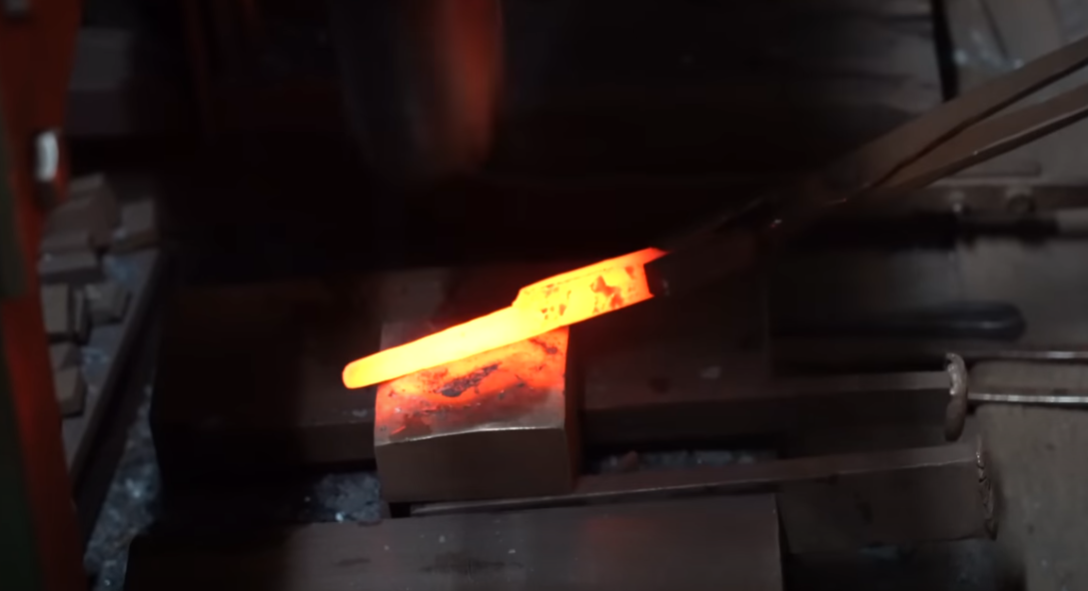
No Japanese Knife, No Life
KIREAJI is a shop established in 2023, born from a strong desire to deliver high-quality Japanese knives to customers worldwide.

















